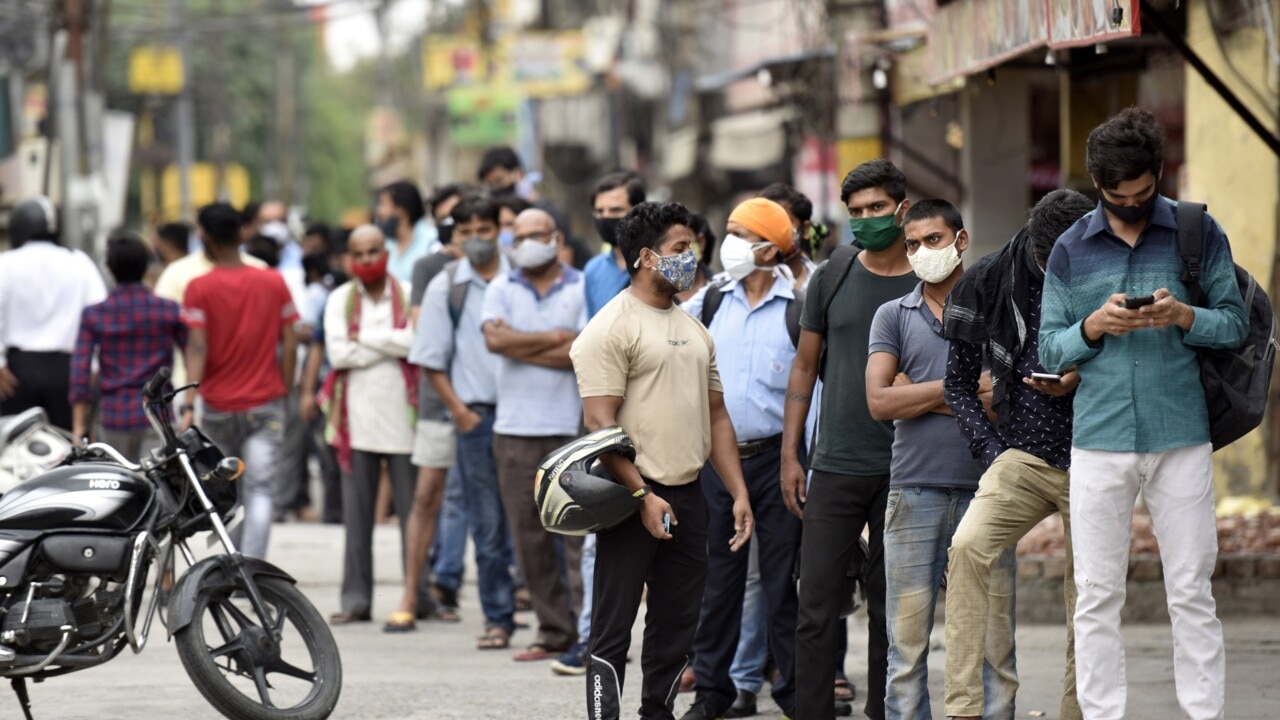New omicron variant BA. 2.75 erupts out of India
These images of the latest Covid variant have revealed a big risk in our immunity. And experts are warning, a new wave might be on the way.

Evolution can’t be held back. Especially when it comes to the Covid-19 virus. Yet another variant has appeared. This time in India. And it appears adapted to evade our immune response.
It passes through 1000 generations each month. That’s more than enough genetic dice rolls for successful mutations to establish their dominance.
The latest coronavirus variant identified as a potential cause for concern is variant BA 2.75 – nicknamed “Centaurus”.
It was first identified in India, but has already been detected in Japan, Germany, the United Kingdom, the United States, New Zealand – and Australia.
Here's the latest picture for the new BA.2.75 sub-lineage (nickname: "Centaurus") - an evolutionary jump from BA.2.
— Mike Honey (@Mike_Honey_) July 2, 2022
It has most commonly been detected in India, showing extremely rapid growth to 18% of recent samples.
It is also spreading rapidly to other countries.
🧵 pic.twitter.com/JnkLsU9Lnw
“There’s minimal data about this variant so far,” says Austrian Academy of Sciences geneticist Dr Ulrich Elling.
“But it has a couple of attributes that have made us take notice.”
The Centaurus variant is a mutation of a mutation, developed from the older Omicron BA. 2 variant.
Surveillence minded folks - worth keeping a close eye on BA.2.75 - lots of spike mutations, probable second generation variant, apparent rapid growth and wide geographical spread...https://t.co/sY0edKoQHX
— Tom Peacock (@PeacockFlu) June 30, 2022
It’s the BA. 5 variant that is currently causing so much concern as it takes hold in Australia. What makes it more successful is the great ease with which it infects new hosts.
But BA. 2.75, which is only in the early stages of study, appears able to dodge any immunity built up against its parent BA.2.
Put simply, that means anyone who had Covid BA. 2 will be just as susceptible to catching it again as they were the first time around. And its even greater difference to BA. 5 could also result in a lack of immune system “recognition”.
Generational change
European researchers have found BA. 2.75 to have eight extra spike protein mutations. These are the nodules found on the surface of a virus that act as “keys” to unlock a host’s cells.
The locations of these “keys” give scientists clues about their capabilities.
In the case of BA. 2.75, they’re clustered in a way that could conceal its identity to an immune system familiar with its parent.
And that makes it even more distinct from the current dominant coronavirus strain – BA.5.
In addition, the 493 reversion is shared
— Ulrich Elling (@EllingUlrich) July 3, 2022
Prominent differences between the lineages are:
486V in BA.5 vs. 339H, 460K in BA.2.75
11/ pic.twitter.com/w6guCBQM7d
They’re in what’s called the N-terminal domain (NTD) – one of the more prominent protuberances of the virus.
“The NTD is decorated with mutations in BA. 2.75 in and around the neutralising antibody binding “supersite” and could thus enhance immune evasion in that region,” Dr Elling explains.
And circumstantial evidence supports this: BA. 2.75 has already been able to establish footholds around the world with extraordinary speed.
Just to emphasise it again: While the distribution across Indian regions as well as internationally and the very rapid appearance makes it likely we are dealing with a variant spreading fast and spread widely already, the absolute data points are few. pic.twitter.com/v6x7l3ugTL
— Ulrich Elling (@EllingUlrich) July 5, 2022
Dr Elling says the number of mutations in BA. 2.75 is “remarkable”. Omicron Delta had a similar number, but just three mutations were enough to supercharge BA.5.
“Thus, the 11 mutations distinct between BA. 5 and BA. 2.75 could allow for yet another wave as BA. 5 immunity might not protect,” Dr Elling warns.
“I really hope this highly speculative thread will turn out to be a false alarm!”
Know your enemy
“Before we are done with the BA. 5 wave, we might already have to prepare for the next,” Dr Elling tweeted.
“Confirmed cases are very few still today. But the international distribution excludes sequencing errors and makes it highly likely that the real numbers are way higher.”
And the warning signs are in place.
“It is really too early to know if BA. 2.75 will take over relative to BA. 2 or even relative to BA. 5,” he adds, “but it is remarkable to note that BA. 2.75 carries alternative “solutions” in the regions mutated in BA.5.”
BA.2.75 Maybe the new lineage to worry about? I don’t like the observed mutations.
— Ulrich Elling (@EllingUlrich) July 3, 2022
Before we are done with the BA.5 wave we might already have to prepare for the next. Let’s take a closer look.
1/ pic.twitter.com/Y8TMf1zCbn
Viruses evolve fastest in chronic infections. It’s where one host’s immune system spends the greatest time fighting back. And the weakened nature of that fightback exposes multiple generations of the virus to a greater variety of “counter-attacks”. Those mutations that dodge these counter-attacks then go on to breed.
Imperial College London virologist Tom Peacock said he believed such cases were likely to be the cause of such significant changes seen in the likes of BA. 2.75.
“None of these individually really flag as that worrying but all appearing together at once is another matter,” he tweeted.
.@doctorsoumya explains what we know about the emergence of a potential Omicron sub-variant [referred as BA.2.75] ⬇ï¸#COVID19pic.twitter.com/Eoinq7hEux
— World Health Organization (WHO) (@WHO) July 5, 2022
The true strength of BA. 2.75 will be known within weeks.
BA. 5 was first identified in February. It made up 5 per cent of all Australian Covid-19 infections by April. By the end of June, it was 40 per cent.
“It looks like something is headed toward us,” says Dr Elling. “But there’s no sure-fire evidence just yet.”
More Coverage
Originally published as New omicron variant BA. 2.75 erupts out of India





